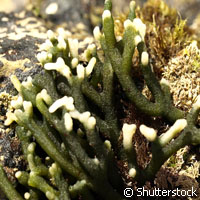Old marine records reveal swelling polar carbon sinks
Scientists in Poland, the UK and US have discovered that polar carbon sinks may be on the rise after analysing samples of a marine creature collected during a famous 1901 expedition to the South Pole. According to the team, the bryozoan grew consistently until 1990, when their growth doubled. The findings, which provide new insight into how carbon dioxide (CO2) is being stored on the seabed and could help geologists and environmentalists in projecting climate change, are presented in the journal Current Biology. The bryozoan investigated by scientists is Cellarinella nutti (C. nutti), a filter-feeding invertebrate that resembles branching twigs. As there is a plethora of C. nutti in the Antarctic, researchers regularly use this creature for their studies. An advantage to assessing C. nutti is that it preserves a clear macroscopic environmental record in its skeleton, recorded as tree-ring-like-growth-check lines. 'This is one of the few pieces of evidence that life in Antarctica has recently changed drastically,' explains lead author David Barnes of the British Antarctic Survey. 'These animals are taking more carbon dioxide out circulation and locking it away on the seabed.' The team says the quick growth of C. nutti hints at an immediate rise in the regional production of the phytoplankton that the bryozoans consume. CO2 dissolved into the seawater is important for these algae; it ensures their survival. The carbon in the algae is first absorbed by C. nutti and then incorporated into its skeleton and other tissues. As the creatures grow, some portions of its body are detached and fall to the sea floor where they end up getting buried. 'Thus, the amount of carbon being buried on the seabed is increasing,' says Dr Barnes, 'whilst globally we are becoming more aware of the need to reduce carbon dioxide in the atmosphere.' Ozone losses are probably responsible for the shift. Such losses have triggered a rise in wind speeds since 2000. Dr Barnes points out that plankton benefit immensely from these stronger winds; the winds blow ice out of the way and help improve the circulation of surface waters. 'If we are right, this is a rare example of animals responding to one global phenomenon, the ozone hole, and affecting another, the greenhouse effect,' Dr Barnes notes. Their research got a big boost with the early marine collections assembled by Captain Robert Falcon Scott, an explorer and polar pioneer who led the British National Antarctic Expedition and British Antarctic Expeditions at the turn of the 20th century. Specimens maintained by museums in New Zealand, the UK and the US were also used in the study. 'Scott's most famous journey was to reach the South Pole, but a team lead by the Norwegian explorer [Roald] Amundsen beat them to it,' Dr Barnes says. 'Scott's team died in 1912 on the journey back to his food depots, and so his exploits are often not associated with success. What is not so well known is that his voyages were first and foremost scientific ones, and the collections of material and information they made were impressive even by today's standards.' The study helps bring to light the challenges of understanding how large-scale processes like climate change and the ozone hole are affecting our planet. While more research is needed to understand how big a role C. nutti plays in the environment, the researchers believe it is probably a small one. 'Nevertheless, we think that the combination of ice shelf losses and sea ice losses due to climate change and the effect of ozone loss-induced wind speeds offer some hope for much-needed carbon sequestration to the seabed in the Southern Ocean,' Dr Barnes explains. 'There are few other places in the world where global and regional changes could actually lead to more carbon being removed from the system.' Experts from the Institute of Oceanology at the Polish Academy of Sciences, the Natural History Museum in the UK, and the National Museum of Natural History, Smithsonian Institution in Washington DC, and the Virginia Museum of Natural History in the US contributed to this study.For more information, please visit: British Antarctic Survey:http://www.antarctica.ac.uk/Current Biology:http://www.cell.com/current-biology/
Countries
Poland, United Kingdom



